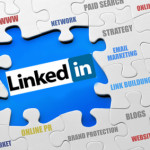“Effective Executive” Series with Eric Newman, VP Products & Marketing, Digby
We are pleased to share another insightful “Effective Executive” interview with Eric Newman, Vice President of Products & Marketing for Digby. In this role, Eric Newman helps brands leverage the power of Localpoint, a cross channel marketing platform. During his 18-year career, Eric has ridden the cutting edge of a number of online revolutions at a successful startups, including Demand Media’s Pluck, Powered, IBM’s DataBeam, Ask Jeeve’s Direct Hit and Motive Corporation’s Question Technologies. He holds a M.B.A. from the Kellogg School at Northwestern University and a B.A. in Information Systems and Marketing from the University of Cincinnati.
Eric shared his thoughts on location-based marketing behavior and which loyalty programs top his list. He also shared his insights with us on why Austin has become such a growing city for tech companies, especially start ups.
What’s the challenge in attaining a location-based marketing strategy?
Using time and place as a real-time trigger for marketing, engagement and customer service in brick and mortar locations adds a whole new dimension to an organization’s marketing and operational thinking – and therein lies the challenge. It starts with figuring out how you want to react to a consumer’s entry into a store, or presence in a target neighborhood – notifying associates of the consumer’s entry or sending a visit-encouraging message to the consumer as examples. From there, the retailers we work with are using that real-world event as a key juncture for mapping the consumer’s cross-channel history – understanding that they shopped on the ecommerce site last night and are likely entering the store to put their hands on the product before making the purchase. That kind of omni-channel use is where location really shines as the link between the on and offline worlds, but it is also the most challenging for an organization to adopt when typically those worlds were organizationally separated in the past.
What have you seen over the last year in terms of measured success of a good location-based marketing strategy?
We have witnessed some amazing results. While we cannot speak to specific customers’ performance metrics, we can talk about campaigns where 60+% of consumers in neighborhoods near a store opened a location-based announcement with push notification set up by the marketer and then in turn, visited the nearby store to redeem the offer. We’ve seen social check-in campaigns through the retailer’s app generate astounding redemption rates as consumers walked into the store, received an offer and then shared the offer with their friends.
What are some of the best loyalty programs you’ve seen for customers?
As a marketer I really appreciate the Kohl’s cash program. Giving consumers discounts they can apply against any product in a virtual cash format makes it easy to earn and easy to spend those points, but all within Kohl’s stores.
As a consumer, I like loyalty programs that offer something a little different as a loyalty reward. Using earned loyalty points at a grocery like Randall’s to get a steep discount on gas at their fueling station is significant enough to actually spur conversation about it at the family dinner table. Any time you can get someone teaching their children about a loyalty program, that’s longevity.
What’s your dream customer – i.e., who could use some improvement with Digby?
Location context as a trigger to more relevantly market and engage the consumer is not limited to one vertical or most appropriate for just one customer. We see interest in Digby from brands in many sectors – from hospitality to dining and even sports franchises – anyone who has a physical place of business and would like to better engage their customers. Interestingly, we learn new use cases for our technology with every potential customer we meet. One of my favorite unexpected use cases was a convenience store chain that builds 50-100 stores a year. That’s millions of dollars of real-estate investment where building on the wrong spot can cost hundreds of thousands of dollars of missed revenue. In this case, the retailer wanted to identify locations where they were considering store development, and use the knowledge of how many of their app-holding, loyal customers drive by these various locations as a set of decision input into their real estate evaluation.
What’s the connection with mobile apps to successful in-store service?
There are so many use cases around customer service where awareness that the customer is at the store is so important. For example, a fast food restaurant wants to allow consumers to order their burgers online for pickup in the restaurant. Doesn’t sound all that complicated until you realize that a fast food sandwich has about a two minute shelf life under the heat lamps. Get caught at a red light on the way to the store for pickup, and they have to start the order all over again. Instead, the restaurant wants to use our Localpoint platform to know when the remote ordering customer has entered the parking lot and place the order into the queue at that moment – ensuring a burger ready to go with minimal waste.
Any predictions for 2014 in terms of marketing behavior, from a B to B or B to C standpoint?
Location is becoming white hot right now as organizations see the relevancy and depth it can add to their customer relationships, and the ROI it can drive in terms of incremental store visits, conversion and cart size growth. Generally speaking, this technology applies best to the B to C experience, given the nature of shopping behavior where consumers visit malls, stores and other retail locations.
Weigh in on Austin and its growth in the tech world – how would you say Austin has changed over the year climate-wise for tech companies?
Austin is an incredible place for technology and has been for many years. A startup community increases in velocity as it builds momentum with entrepreneurs at all organizational levels building startups and then facilitating the sale and integration of the startup into larger technology companies. This creates a powerful secondary effect of drawing larger companies into Austin and then setting up the entrepreneur to make a run at their next big idea. Austin has been doing this successfully for 20 years and has mature, fertile field of technology companies and startups spanning from the B to C space, like MapMyFitness who recently announced acquisition by UnderArmour, to B to B and even hardware solutions. The whole city has adopted tech as a mainstay of the economy and culture and the tech companies fit right into the “Keep Austin Weird” message we are known for.
Have you gone to SXSW? What’s your experience or viewpoint on it as a value for organizations or evangelists?
SXSW is an amazing mix of digital technology, media, movies and music. However, its meteoric growth has moved well beyond its roots as an interactive conference to an expansive showcase. The biggest challenge is navigating the breadth of things you can do during the show, ranging from actually learning something in session, to hobnobbing with the digital elite, to immersing yourself in the non-stop party swirling around the event. You need a SXSW plan of action before stepping foot into the show and sign up for the sessions you need as early as possible to ensure attendance.
Top marketing outlets you read?
Being all mobile, all the time, I spend most of my reading budget on sites like Mobile Commerce Daily and the Location Based Marketing Association. I augment that with industry specific sites like Stores Magazine and Advertising Age. As a technology product guy, I cannot live without Business Insider or our Forrester relationship, as industry analysts give a deep, cross-vendor view of the world that is hard to find from more traditional industry media publications.


 This week we are happy to share our latest interview with Dan Rowinski, Mobile Editor at
This week we are happy to share our latest interview with Dan Rowinski, Mobile Editor at 
 Behind every successful social media marketer is an arsenal of marketing tools that help to ideate, implement, and track the success of a social media campaign. But social media tools are a dime a dozen, and keeping up with the latest offerings can be an overwhelming and frustrating process. Fortunately for us, Social Media Strategist Rebecca Debono has posted her
Behind every successful social media marketer is an arsenal of marketing tools that help to ideate, implement, and track the success of a social media campaign. But social media tools are a dime a dozen, and keeping up with the latest offerings can be an overwhelming and frustrating process. Fortunately for us, Social Media Strategist Rebecca Debono has posted her  If you are looking at LinkedIn as your next digital marketing project, then don’t forget to spend a decent amount of time focusing on your ‘company page’. If you are looking for some guidance, then check out
If you are looking at LinkedIn as your next digital marketing project, then don’t forget to spend a decent amount of time focusing on your ‘company page’. If you are looking for some guidance, then check out 

